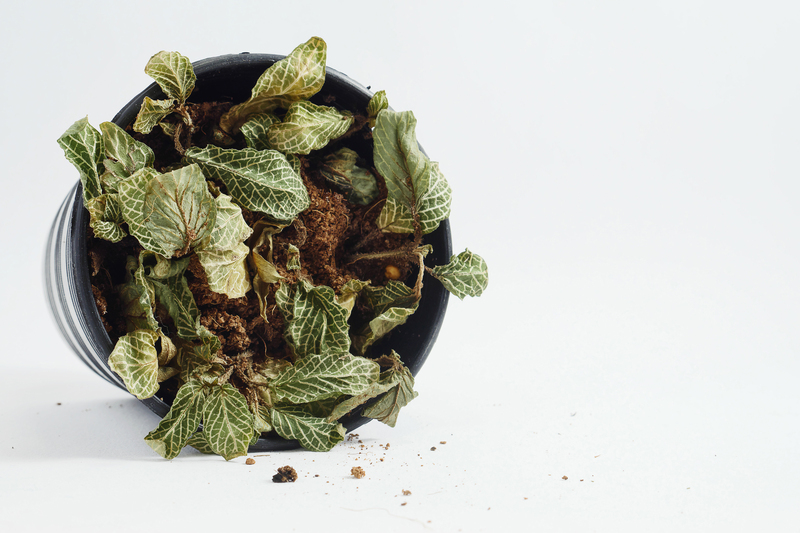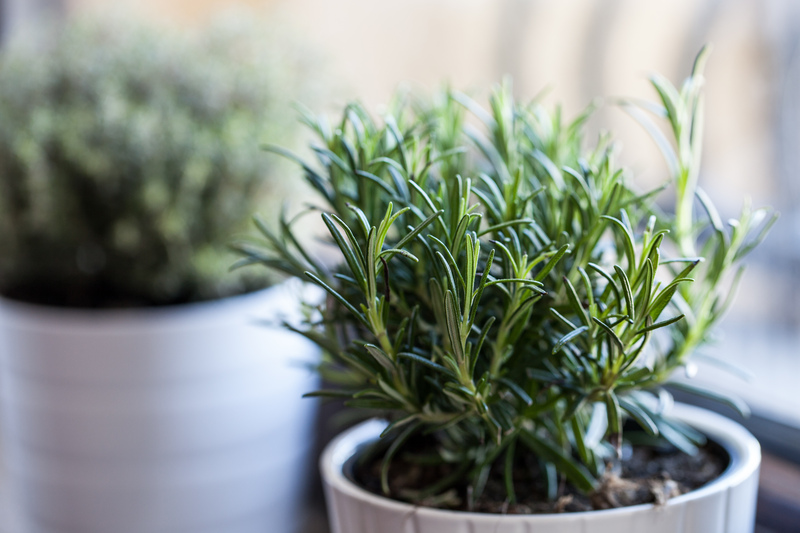Quick tips for dog-proofing your vegetable garden
Posted on 23/08/2025
Quick Tips for Dog-Proofing Your Vegetable Garden
Is your playful pup ravaging your well-tended vegetable garden? Dogs can be curious, energetic, and sometimes a little mischievous--qualities that don't always mesh well with delicate seedlings and thriving veggie patches. Whether you're a seasoned green thumb or a novice grower, dog-proofing your vegetable garden is essential for both your harvest and your canine's well-being. In this comprehensive guide, we'll explore quick, effective strategies for protecting your crops from your four-legged friend while nurturing a healthy relationship between pet and plants.
Why Is Dog-Proofing Your Vegetable Patch Important?
For many families, dogs are cherished members of the household. However, their natural tendencies--digging, chewing, running, sniffing--can spell disaster for vegetable gardens. Beyond the inconvenience of uprooted carrots or trampled tomato vines, there are also potential health concerns for your pet if they ingest toxic plants or garden chemicals. Proper dog-proofing ensures:
- Bountiful harvests--free from paw prints and nibbled leaves
- Your pup's safety--protection from potentially harmful plants or pesticides
- Peace of mind--less conflict between pet playtime and gardening passion

Assessing Your Dog's Garden Behavior
Before jumping into solutions, observe how your dog interacts with your garden. Do they like to dig, eat plants, chase insects, or lounge among the squash? Identifying their habits helps you tailor your dog-proofing tactics for maximum effectiveness.
- Diggers: Are they excavators or just casual offenders?
- Chompers: Do they chew leaves, stems, or fruits?
- Trackers: Do they use the garden as a shortcut?
Top Strategies for Dog-Proofing Your Vegetable Garden
Discover the most reliable ways to keep your vegetable garden dog-friendly yet protected. Each tip focuses on a different aspect of dog-proofing your vegetable garden--mix and match for best results!
1. Invest in Sturdy Fencing
The most effective way to dog-proof any vegetable garden is to install a proper barrier. Fencing doesn't just keep dogs out; it can also deter other animals like rabbits or deer. Consider these guidelines:
- Height matters--Choose fencing at least three to four feet tall for small to medium dogs, and taller for athletic jumpers.
- Buried bases--If your dog is a digger, bury fencing 6-12 inches underground to prevent tunneling.
- Materials--Sturdy welded wire, chicken wire, or decorative metal fencing work best for most yards.
- Gates and access--Install self-closing, latching gates to reduce accidental entry.
2. Create a Designated Dog Zone
Dogs crave outdoor stimulation. By giving them their own corner--a designated dog run or play area--you lure their attention away from fragile vegetable beds. Include favorite toys, shade, water, and soft mulch. Reinforce boundaries with clear markers like stepping stones or low fencing.
3. Use Raised Garden Beds
Elevated beds add an extra layer of protection, discouraging most dogs from romping through your produce. Bonus: raised beds often improve soil drainage and reduce weed problems!
- Height recommendations: Beds that are 18-24 inches tall successfully deter most medium and large dogs.
- Materials: Avoid treated wood that may contain chemicals harmful to pets. Consider natural cedar, food-grade composite, or stone.
- Edge protection: Add smooth, wide edges to create a physical and visual barrier for sniffing pups.
4. Mulch with Pet-Friendly Materials
Certain mulches (like cocoa bean mulch) are toxic to dogs. Instead, opt for pet-safe alternatives such as:
- Pine Bark
- Cedar Chips
- Straw or Hay
- Shredded Leaves
These not only keep weeds at bay and hold moisture but also deter dogs from digging due to texture or scent.
5. Use Natural Deterrents
To discourage dogs from entering or disturbing your vegetable patch, experiment with safe, natural repellents, especially if traditional fencing proves impractical.
- Citrus peels: Sprinkle orange or lemon peels along pathways or within beds--many dogs dislike citrus scents.
- Vinegar solution: Light sprays around the perimeter (not on edible plants) can repel curious noses.
- Commercial pet repellents: Double-check that they're pet-safe and eco-friendly before use.
6. Choose Dog-Resistant Plants for Borders
Certain plant varieties are unpalatable, spiky, or simply unappealing to dogs. Consider using these to edge your beds or garden paths:
- Rosemary
- Lavender
- Rose bushes
- Ornamental grasses
- Barberry
These act as both a visual and physical barrier, signaling "keep out!" to most dogs.
7. Secure Compost and Mulch Piles
Compost piles attract dogs with tempting kitchen scraps and scents. Cover or fence these areas, and avoid composting dangerous foods (like onion, grapes, or garlic). Similarly, contain mulch piles to prevent digging.
8. Mind Toxic Plants and Garden Chemicals
Some of our favorite veggies and garden products are toxic to pets. Keep your garden dog-safe by avoiding or strategically planting vegetables and herbs like:
- Onions and garlic
- Chives and leeks
- Tomato and potato leaves
- Rhubarb
- Unripe (green) tomatoes
If using fertilizers or pesticides, always choose pet-friendly versions and follow directions for application and drying times.
9. Train and Supervise Your Dog
Ultimately, consistent training is key. Teach basic commands like "leave it" or "stay" and reward good behavior with treats and praise. Supervised outdoor time is the most reliable way to encourage boundaries, especially in the early days of introducing a new garden or puppy.
10. Create Physical Obstacles and Visual Cues
Simple tricks can help reinforce garden perimeters:
- Lay chicken wire just below the soil surface to deter diggers
- Use smooth river rocks or decorative edging stones
- Scatter pinecones in beds (uncomfortable for paws!)
- Install motion-activated sprinklers or harmless noise makers
Bonus Quick Tips for Dog-Proofing
- Rotate garden access: Restrict your dog's yard time during planting or harvesting.
- Tire out your pup: A well-exercised dog is less likely to dig or explore out of boredom.
- Keep tools and hoses tidy: Dogs love to chew--store sharp or toxic items in locked sheds.
- Check fencing often: Dogs may find (or create!) weak spots over time. Regular maintenance is essential.
- Rotate deterrents: Dogs may become desensitized, so try different natural repellents regularly.
The Best Dog-Proof Layout for Your Vegetable Garden
Good garden design isn't just about aesthetics or yields--it's about creating harmony between people, plants, and pets. Consider these layout strategies for the ultimate dog-proof, productive paradise:
- Zoned gardens: Separate zones for pets, edibles, and ornamentals using paths, fencing, or hedges.
- Accessibility: Place the most tempting or delicate crops toward the center, furthest from play areas or running routes.
- Visual cues: Raised beds, trellises, and mulch borders create clear signals that certain areas are off-limits.
- Shady retreats: Place dog-friendly amenities (like a sandbox or splash area) in a shady section away from vegetable beds, so your pup has an inviting alternative.
Common Mistakes to Avoid When Dog-Proofing a Garden
Even with the best intentions, some dog-proofing attempts can backfire. Avoid these pitfalls:
- Using toxic repellents: Avoid chemical deterrents that could harm pets, wildlife, or your produce.
- Underestimating your dog's persistence: Some breeds are more determined. Upgrade barriers as needed.
- Relying on punishment: Negative reinforcement can increase anxiety and worsen destructive behaviors.
- Overlooking gates and access points: A single open gate can undo all your dog-proofing work!

Maintaining Balance: Let Your Dog and Garden Thrive
A truly dog-proof vegetable garden doesn't shut out your furry friend--it creates balance. Enjoy abundant harvests while sharing the joys of the outdoors with your loyal companion by teaching them boundaries and providing fun alternatives.
- Update deterrents and barriers seasonally
- Engage your dog in positive training around garden zones
- Celebrate successes and forgive minor mishaps--gardening, like dog ownership, is an adventure!
Conclusion: Enjoy a Thriving, Dog-Safe Vegetable Garden
Dog-proofing your vegetable garden is an act of love--for your plants, your pet, and your peace of mind. With the right mix of fencing, layout, training, natural deterrents, and pet-safe materials, you'll enjoy bountiful veggies and a happy, healthy canine. By integrating these quick dog-proofing tips, you'll foster a space where green thumbs and wagging tails coexist in harmony.
Ready to transform your garden into a dog-safe haven? Start with one or two of these dog-proofing tips and watch your patch and your puppy thrive together!
Additional Resources
- ASPCA List of Toxic and Non-Toxic Plants
- Pet Poison Helpline
- Dog-Proof Garden Tips from Gardeners Supply Co.
Continue exploring dog-proofing strategies and happy gardening!



